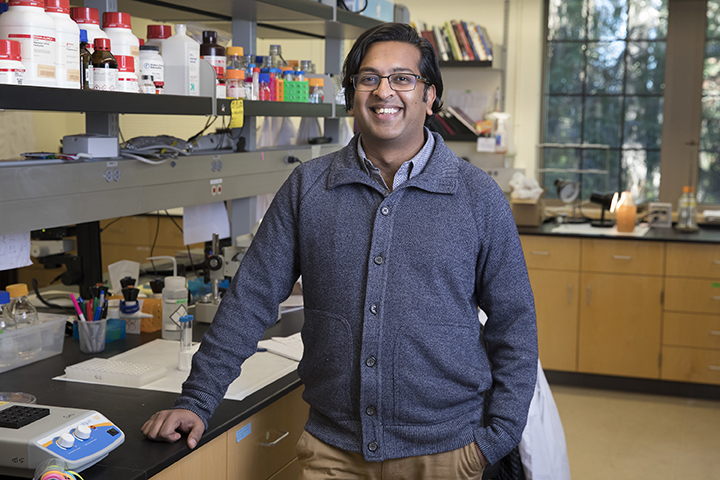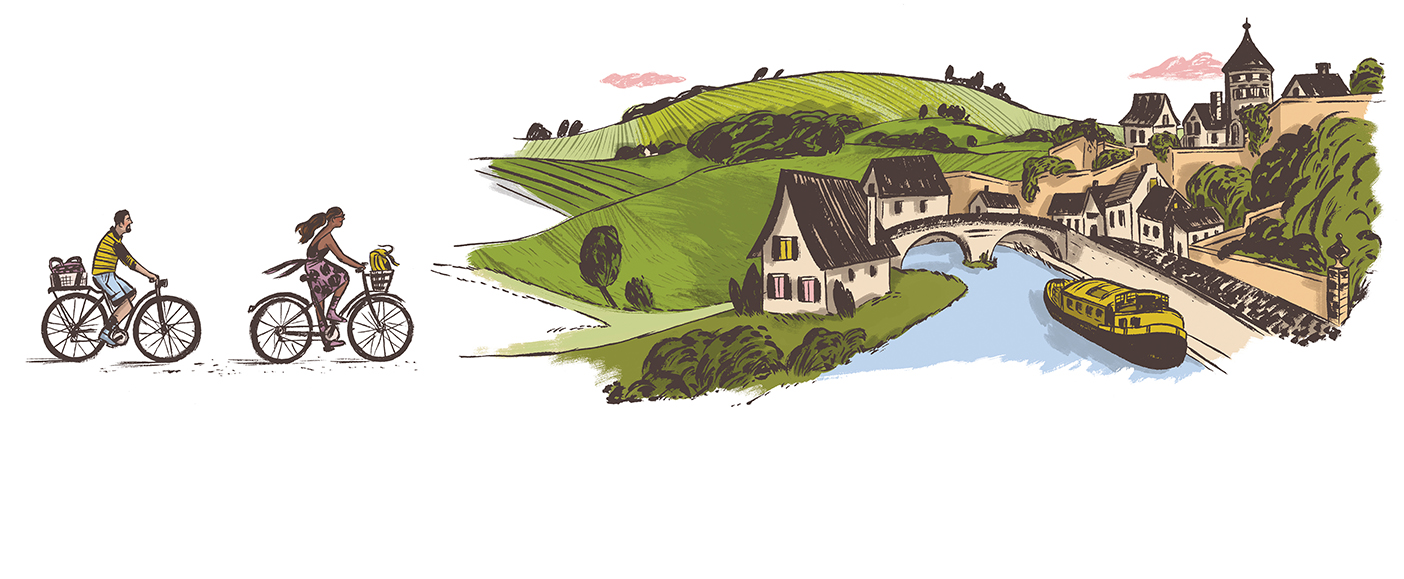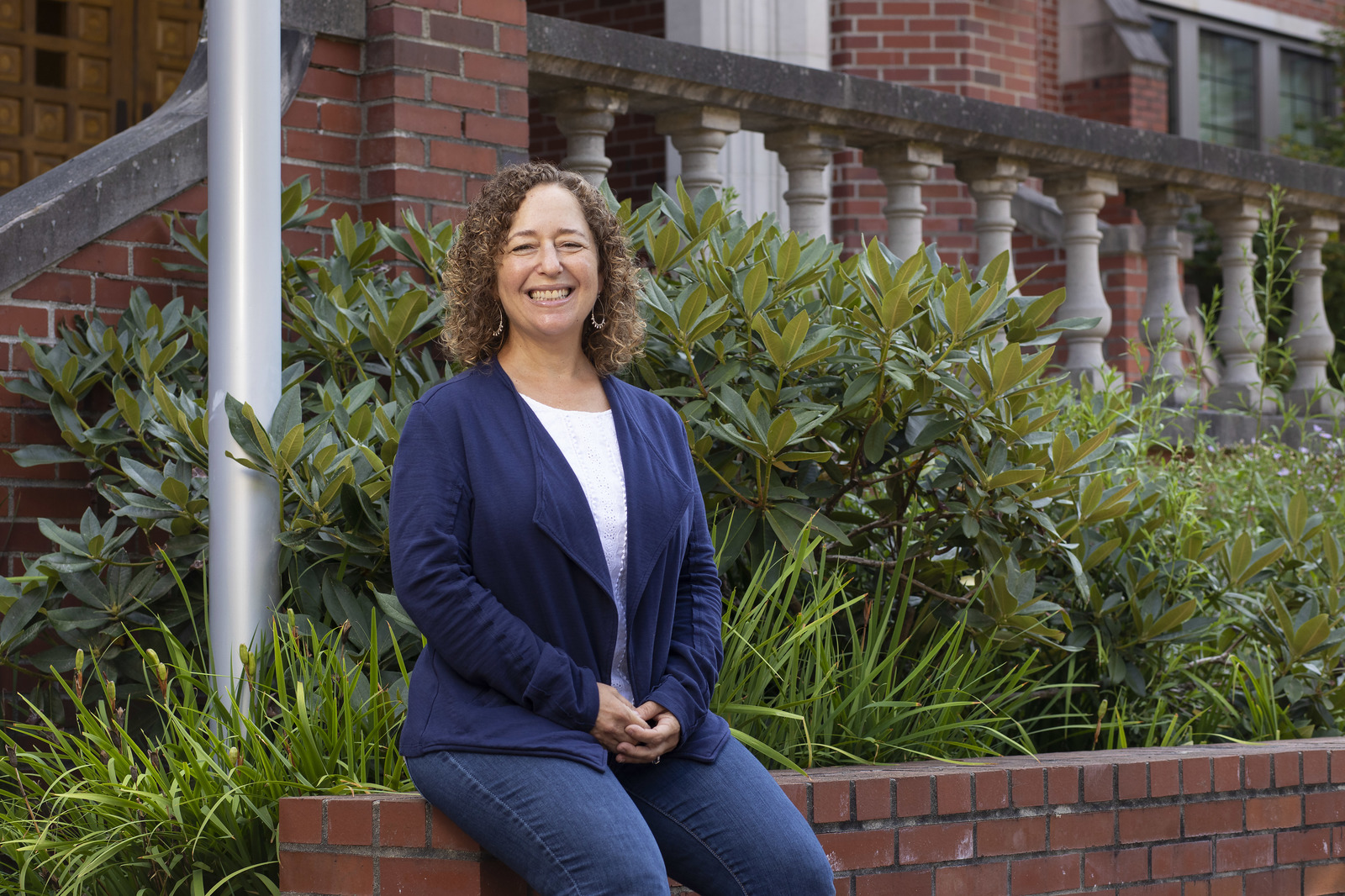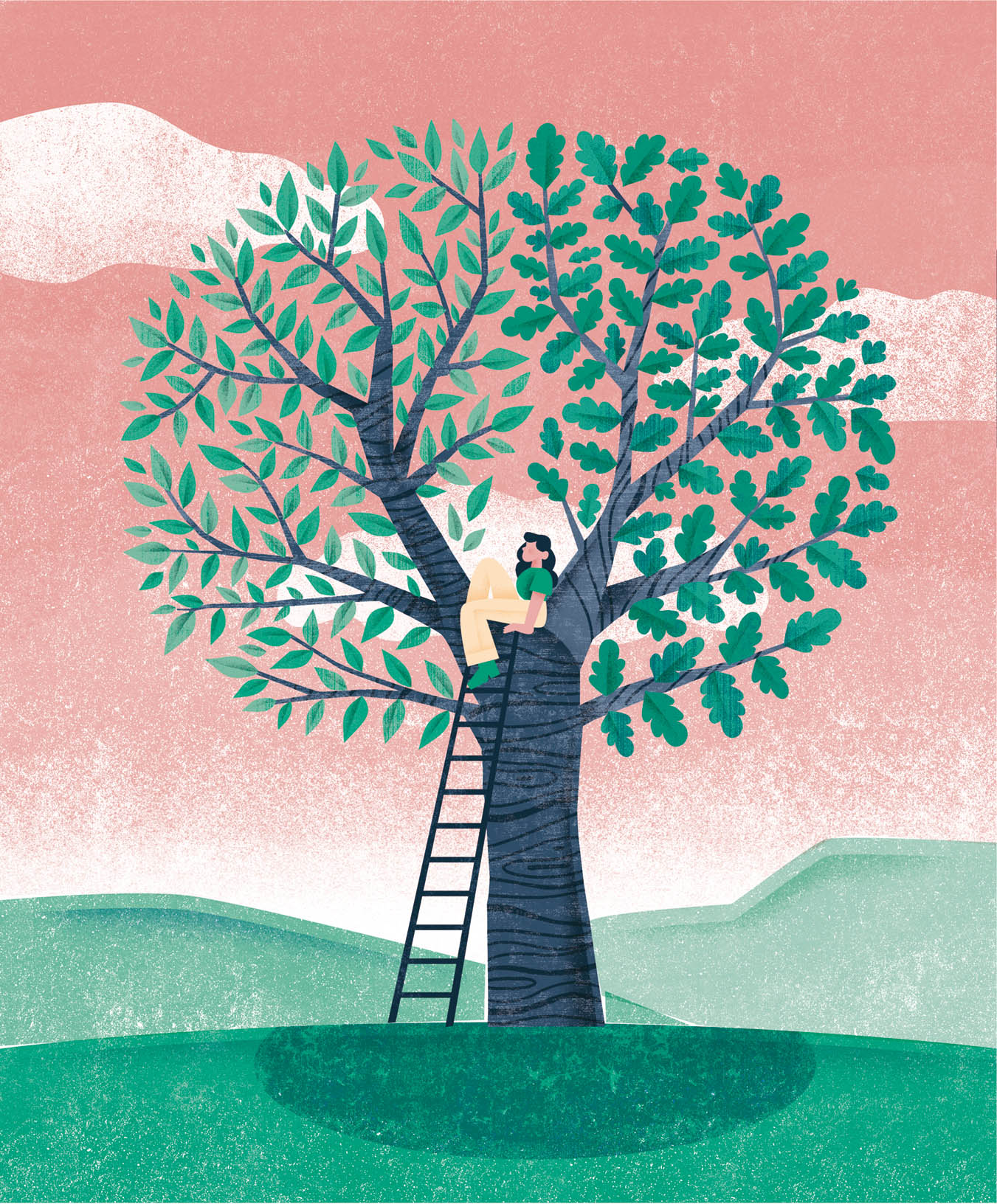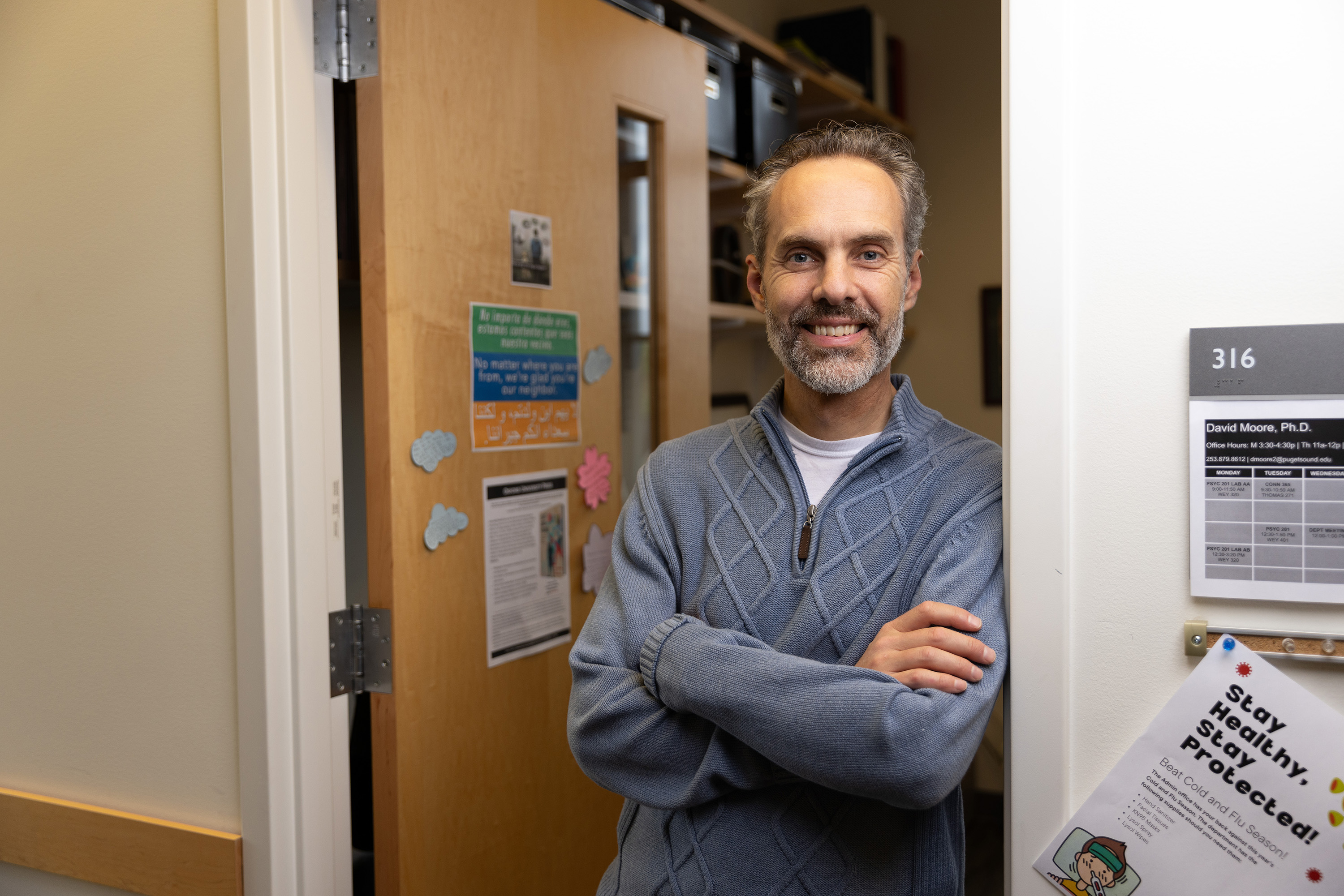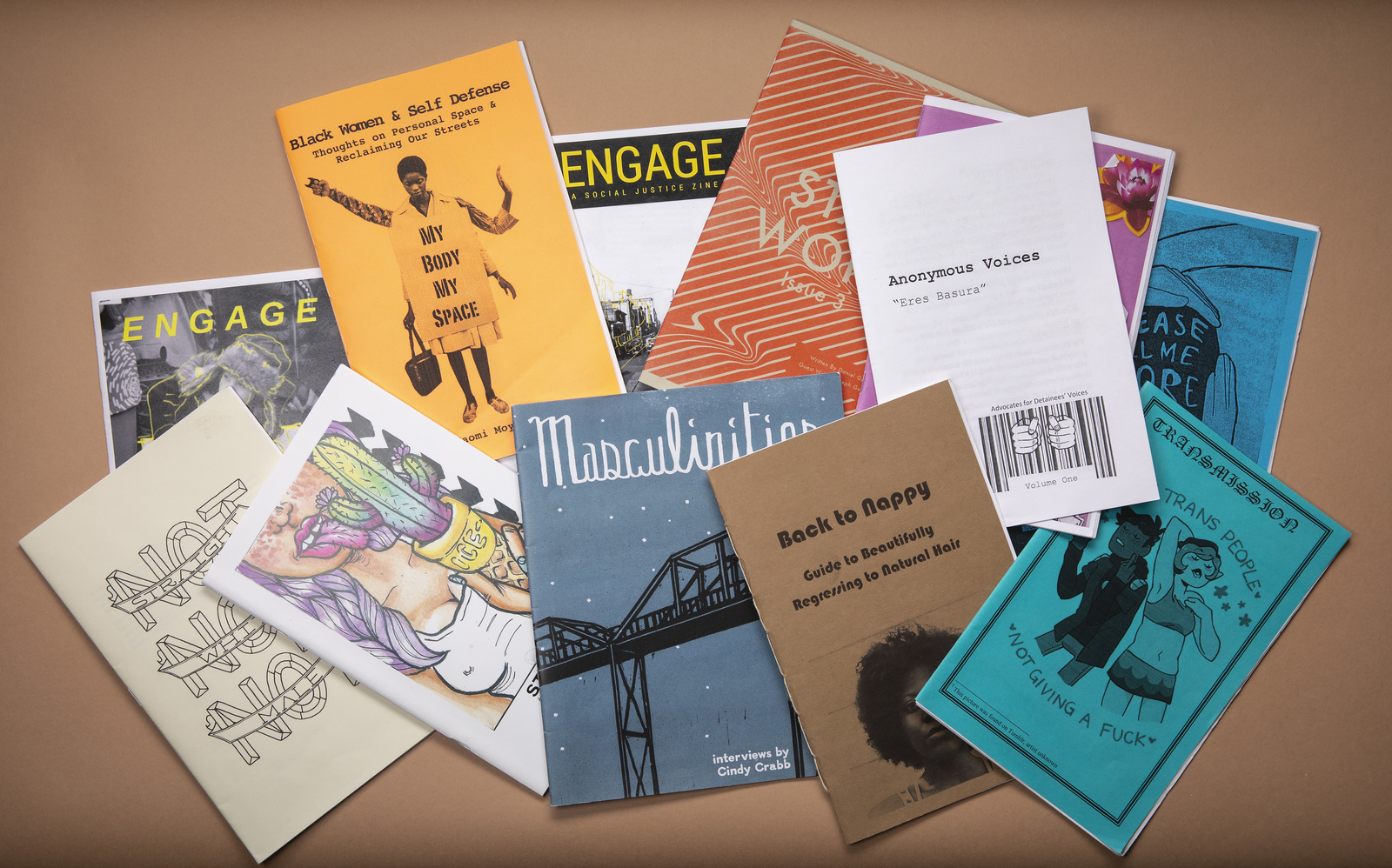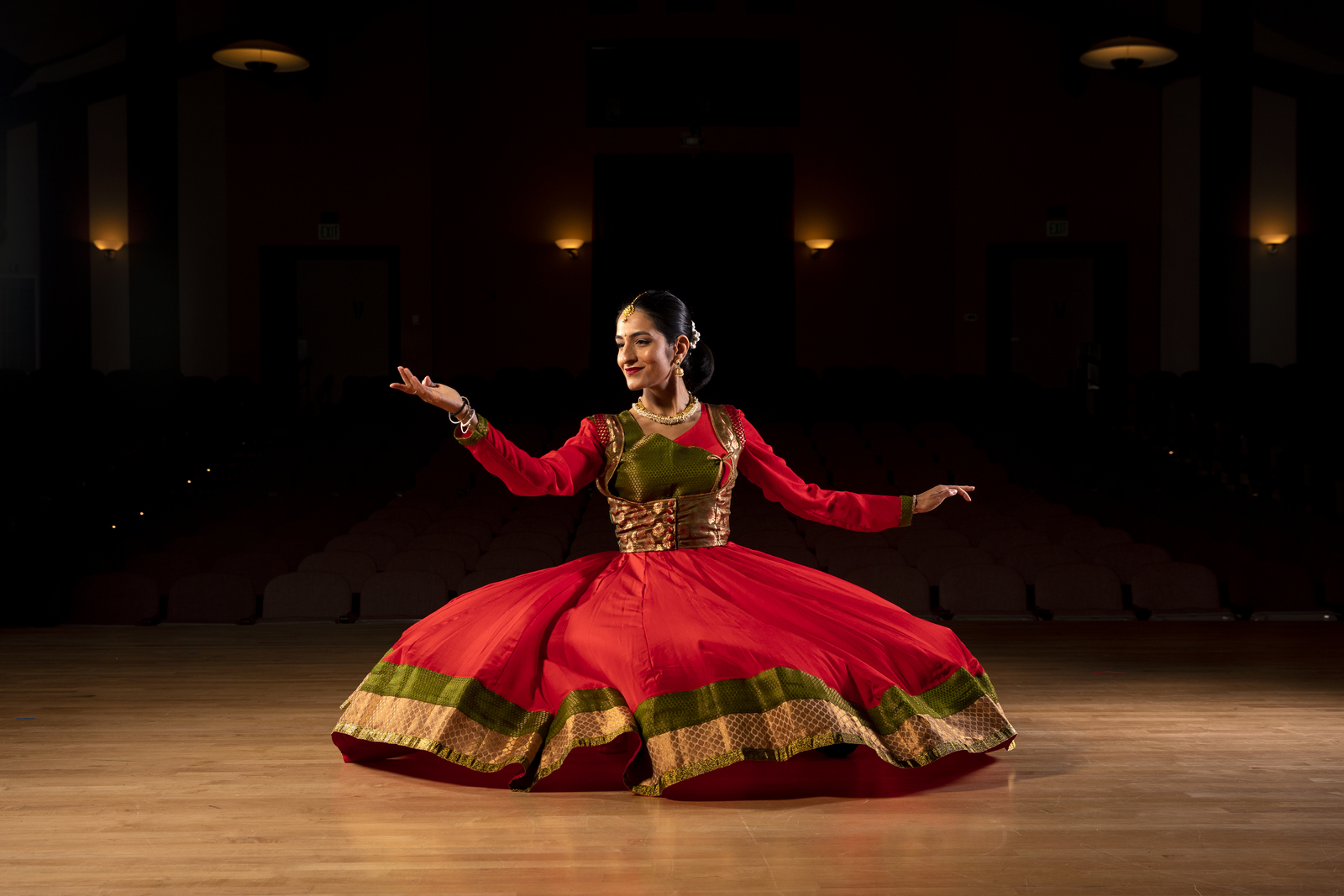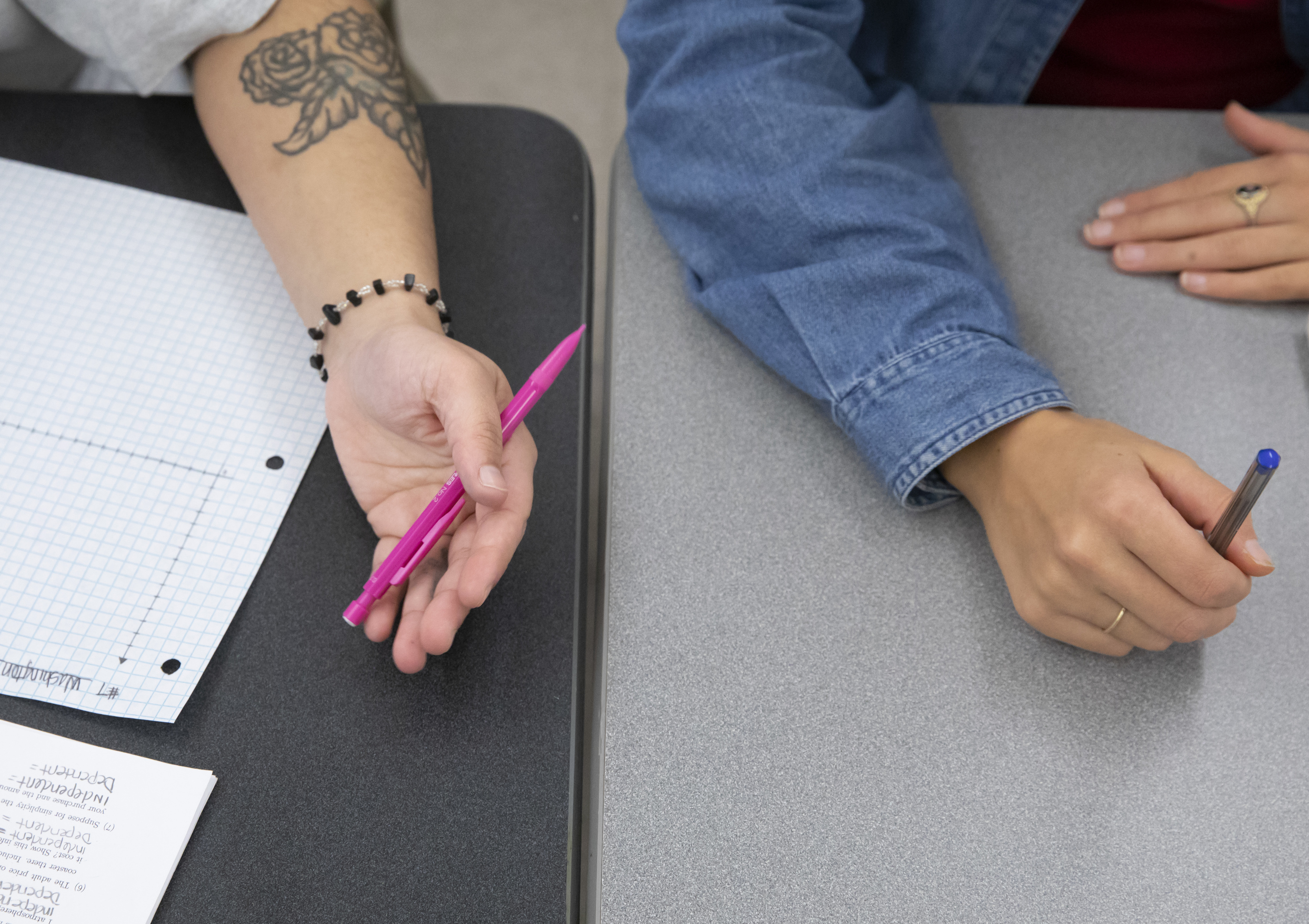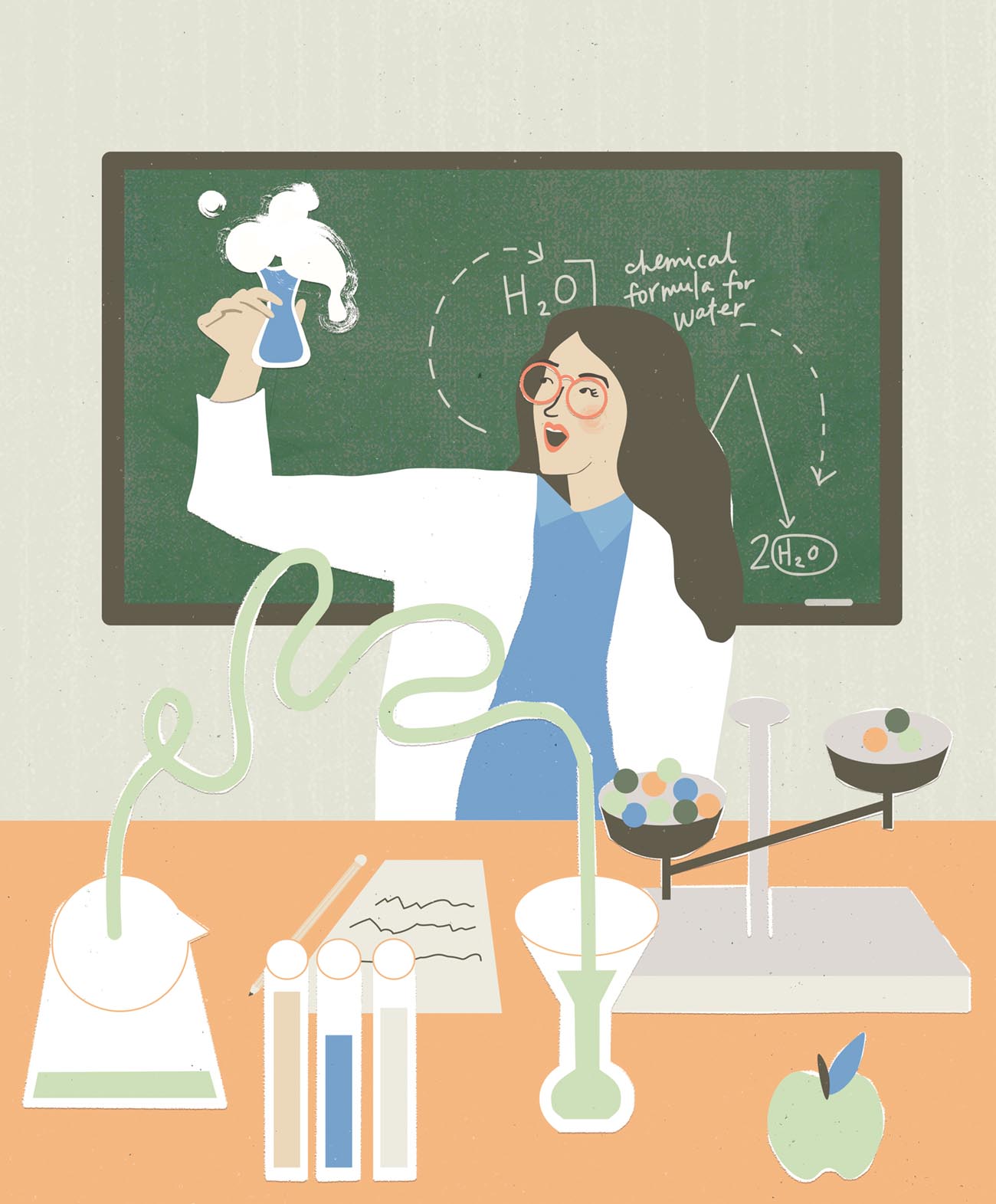Associate Professor Siddharth Ramakrishnan explores the intersection of art and science
Siddharth Ramakrishnan, associate professor of biology and the Jennie M. Caruthers Chair in Neuroscience, has a weird brain. He is a master of the microscopic details and concepts of neuroscience—while a research scientist at Columbia University, he designed microchips to record from brain cells, and in his lab at Puget Sound, he studies the development and physiology of reproductive neurons in zebrafish—but he is also a creative visionary, capable of a more spatial, fluid way of seeing the world.
He often collaborates with artists to explore the intersection of art and science. As a postdoctoral researcher at UCLA, he was highly involved in the Art|Sci Center, co-creating exhibitions such as a “sniffing booth” that demonstrated the superior smelling capacity of dogs. And at Puget Sound, he created the Art + Science Salon, which brings visiting artists and interdisciplinary scientists together to discuss ideas, either on campus or at the Tacoma Art Museum.

Siddharth grew up in Chennai, Southeast India, and earned his Ph.D. in neuroscience from the University of Illinois in Chicago. His research and teaching practices have lately been focused on questions of neuroethics. For six weeks this fall, during his sabbatical, he was a visiting fellow at the Montreal Clinical Research Medicine Institute, where he collaborated with local artists to organize an event called “Neurodiversity, Ethics, Art, and Public Inquiry.” I caught up with him in his Weyerhaeuser Hall office just after he returned.
Q: How did the talk in Montreal go?
A: It went really well. I was able to meet up with some locals who were already interfacing neuroscience and art, and they were really excited about the idea of also integrating philosophy and ethics into the discussion. So we organized this event where I would give a talk about neurodiversity and neuroethics, and then we would network with the public through a speed-dating event. About 100 people showed up, which was amazing for me, especially in a new place.
Q: Speed dating? What did that look like?
A: We had papers laid out on all the tables, and different sets of colored pencils and pens and crayons, and we had a big gong. Every five minutes we would beat on it, and people would just move from one conversation to the next. We had prompts for the different topics we wanted them to talk about. As they progressed from one person to the other, their ideas would take shape on the table.
Q: What sort of prompts did you have?
A: Simple things, like mental illness and brain privacy, and topics like consciousness. Overall, the conversations were great. People didn’t want to move after five minutes, so we had to really push them to go to the next station. If I was to organize this event again, I would probably have visual prompts at each location, where you have an image or an object and then use that as a cue to discuss and build something around it.
Q: Why would visual prompts be helpful?
A: There were some autistic individuals there, and they loved the drawing aspect because they didn’t have to make eye contact or push themselves to constantly engage with the person in front of them. Rather, they could look at the paper and use that as a cue to go forward. If we want to engage people of neurodivergent backgrounds, having those kinds of conversation pieces is a good idea.
Q: How did you become interested in blending the worlds of art and science?
A: When I was a researcher at UCLA, all my joy and excitement was related to my research. If my experiments worked, I was extremely happy; if the experiments failed, I was unhappy. I felt very selfish and disconnected from the world, and I was looking for more connection. Someone suggested that I partner with Dr. Victoria Vesna, a media artist at UCLA’s Art|Sci Center. The first question she asked me was, “What is the most exciting thing about science for you?” I told her something completely unrelated to my research. And she said, “OK, let’s start working on that as a project.”
Q: And what was that exciting thing?
A: It’s this concept of the hox genes, which define your body plans. They make sure that you have a head and two arms and two feet. But the exciting thing is that the same set of genes also makes sure that a snake has a long body or a fly has wings. When you look around, you see all these different creatures that look so different, but the genes that control all the differences are the same, which is such a fascinating concept. I wanted to showcase how this morphological diversity has the underlying same set of genes. So Victoria and I started collaborating on a project, which has evolved into making a cookbook.
Q: How did it evolve into a cookbook?
A: We created an exhibition as dinner party, and we invited people to come to the table as an animal of the Chinese zodiac. They came and sat at the table, and we talked about mutations and metamorphoses and genetic alterations and things like that. But the thing is, when they came to the table they wanted to eat. We started preparing food based on the different Chinese zodiac signs, and that has now evolved into a potluck where people are told, “These are the ingredients that are good for your animal, so bring them to the party.” When they come, they exchange food, which we use as a parlance for exchanging genetic materials. It’s a lot of fun, and now we have recipes that people have made over the years, which we’ve collected in the Hox Zodiac Cookbook.
Q: That’s amazing. I’d love to see that.
A: It’s a great project. We just had a rough artist copy put together for our exhibition in Santa Monica, and we’ll hopefully have an exhibition here again soon.
Q: What else are you working on?
A: My latest is a set of tarot cards. It’s going to be “Neuro-Tarot.” I’m going to write about what happens in your brain when you look at a tarot card, in terms of evoking imagery and imagination. We can use them to talk about neuroscience concepts, but also they’ll have some imagery that could potentially be used as tarot.
Q: These are incredible. What is this one?
A: This one is talking about how neurons are born—this is the beginning of your spinal cord and your brain. But how it’s drawn, it’s more about how neurons function. So I’m trying to design a whole set of cards around that theme.
Q: It’s interesting that you can draw something that you are trying to express, and you can also use scientific language to explain it. Does one way of thinking tend to overtake the other?
A: When I trained as a scientist, I had to edit out my flowery language. It was a huge editing process. And I feel that in some ways, Puget Sound has helped me gain some of that creativity again, because the university encourages interdisciplinary learning. It has helped me go back to the basics of what excites me.
